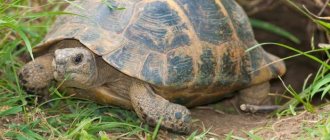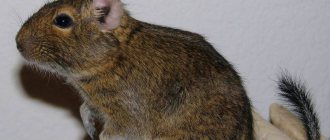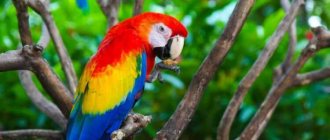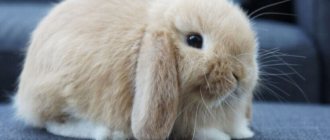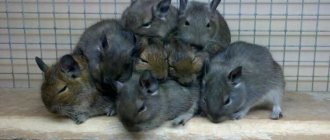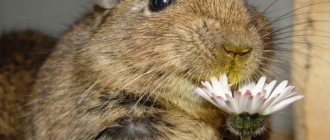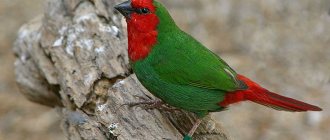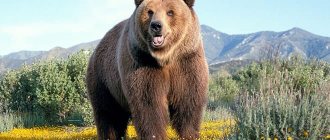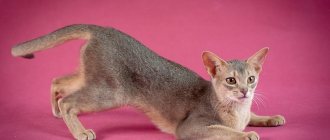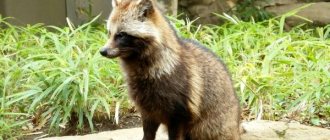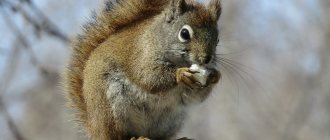- Wild animals
- >>
- Mammals
All over the earth, in areas where coniferous or deciduous forests grow, you can find unusual small animals that can skillfully fly through the air without wings. These small rodents are called flying squirrels, or flying squirrels . The peculiarity of these animals is that they fly from tree to tree with the help of large membranes that are located between the hind and front legs.
Origin of the species and description
Photo: Flying squirrel
Flying mammals or flying squirrels are very amazing creations that are not subject to the laws of gravity.
There are several types of these animals:
- simple flying squirrels;
- woolwings;
- marsupial flying squirrels;
- spiny tails.
These are different families with common ancestors. Their genealogy began more than 150 million years ago. The facts are confirmed by finds dating back more than 150 million years that were discovered in China. Ancient flying creatures could move along the tops of neighboring trees in the same way as modern flying squirrels.
Video: Flying squirrel
The largest flying animals were called Maiopatagium furculiferum. They were similar to the modern North American flying squirrel, had a size of about 23 cm, and their weight could reach 170 grams. The smaller animals were called Vilevolodon. Both species had long flexible limbs, sharp claws and membranes that allowed them to quickly climb tree branches and glide from great heights.
Ancient animals could travel considerable distances through the air - up to 30 meters. This gave the animals greater maneuverability, which meant escape from predators and a greater chance of survival.
Interesting Facts
Flying squirrels are very unusual and amazing animals. In living nature, they are almost impossible to notice, and their lifestyle and appearance arouse undying interest.
Interesting information about flying squirrels:
- The squirrel got its name due to its ability to soar above the ground.
- The teeth of flying squirrels, like all rodents, grow throughout their lives.
- In addition to the vibrissae, which are located on the muzzle, flying squirrels have sensitive hairs on the forelimbs.
- Thanks to their tail and membrane, flying squirrels can change their flight angle by 90° several times during one glide. This helps to avoid a collision and correct the flight course.
- Flying squirrels, unlike ordinary squirrels, do not break the shell of nuts, but make a small hole through which they eat the kernel.
- Unlike other animals, squirrels make winter reserves exclusively from plant products.
- To jump and glide over a long distance, flying squirrels climb higher. The landing point should be 2-3 meters below the starting mark.
- Flying squirrels wait out the winter in groups of 3–8 individuals. Curled up in a ball, they warm each other. During the day, the squirrels who slept in the ball exchange places with individuals who slept outside the ball so that they can warm up.
Flying squirrels are considered a poorly studied species, since very little reliable information is known about their behavior, reproduction and life.
Appearance and features
Photo: Flying squirrel animal
Flying squirrels are a species of common sugar possum, but bear a great resemblance to common squirrels.
Distinctive features of flying squirrels are:
- a wide fold-membrane between the hind and front paws;
- thicker and silkier fur;
- huge expressive eyes.
These animals are distinguished by their very small compact size. They do not grow more than 20-22 cm, including a long tail. Typically males are slightly larger and stronger than females. The animal’s unusual, very expressive, round and large eyes allow it to navigate perfectly during the day or at night, and its sharp claws make it possible to move freely along the branches and crowns of trees.
The animal has a small round head and huge black eyes. The hind legs are large, with sharp, downward-curved claws. Squirrels' fur is very soft, silky and fluffy. The color changes depending on the time of year. In summer, squirrels have a slightly reddish color, and in winter they have a whitish-gray tint. This allows animals to easily camouflage and be invisible to others or aggressive predators, leading an active lifestyle.
Where does the flying squirrel live?
Photo: Flying squirrel in Moscow
Flying squirrels are found in nature almost all over the world.
They can be found:
- on different continents: in Russia, America, Europe;
- in different countries: Mongolia, Korea, China, etc.;
- on large and small islands: in Japan, Sakhalin, the Kuril Islands.
The animals love to live in damp birch or deciduous forests. They often use old tree hollows or abandoned bird nests for their homes. The gray color of the soft fur contributes to good camouflage of the animal, merging with birch or alder bark.
On the territory of Russia there are more than 10 species of flying squirrels, which have minor physiological differences among themselves:
- Siberian and Anadyr;
- Semipalatinsk and Yakut;
- Ussuri and Sakhalin.
The species differ in their ability to winter and adapt to low temperatures. The Yakut and Anadyr varieties have longer and thicker fur, allowing them to stay warm at very low temperatures.
Many species of flying squirrels are listed in the Red Book and are protected by international law from shooting and complete extermination by poachers. In many countries, there is a heavy fine for shooting a squirrel. But despite all the sanctions and prohibitions, squirrels are easy prey for poachers, who destroy them for the sake of beautiful fur.
Habitat
Flying squirrels not only move through the air, but also climb trees
The flying squirrel lives in Australia, Japan, Mongolia, Indonesia, Finland, New Guinea, Northern Europe and America, as well as Russia. The animal lives in a forest where aspens, cedars, birches, alders and conifers grow. Most often, the animal can be found in damp birch or alder forests. In high mountain areas, flying squirrels are also found, but only if tall trees grow there.
What does a flying squirrel eat?
Photo: Flying squirrel Red Book
The diet of an animal directly depends on its natural habitat. The main food product is tree buds, young bark, needles, seeds of coniferous plants or cones, which the animal stores in reserve. In the deciduous forest, the squirrel forages for berries or mushrooms. In conifers, cones, nuts, and needles are used as food.
Sometimes an animal can steal bird eggs and even newly hatched chicks, which are a treat for squirrels. During the winter period of the year, the animals do not fall into complete hibernation, but are inactive, stay in their hollows and eat the reserves prepared in the summer.
Nutrition
The diet of flying squirrels consists of approximately 70% plant foods, most of which are fruits (mango, apple, melon, watermelon). The remaining 30% comes from protein foods. Basically, these are grain crops in the form of muesli and milk porridge.
The preferred vegetables are zucchini, cucumbers (seasonal only!), cabbage, and sweet carrots. You can put a tree branch with leaves in the cage. Animal food is also required: mealworms, green caterpillars without lint, grasshoppers, beetle larvae. If it is not possible to provide live food, you can temporarily replace it with boiled chicken fillet, cottage cheese, or a boiled egg. Low-fat yogurt, devoid of flavoring additives, is also beneficial for possums.
Sometimes it is useful to pamper the squirrel with 1-2 pieces of dried fruit (prunes should not be given!), 1-2 nuts, honey.
Approximate diet of a sugar glider for 1 animal
- Protein food: zoophobes (2 pcs.) or mealworms (6-8 pcs.).
- Boiled chicken or turkey fillet – 30 g.
- Fermented milk products - twice a week.
- Boiled quail egg without shell – once a week.
- Milk porridge, oatmeal or buckwheat with honey, fruit or candied fruits – once a week.
Features of character and lifestyle
Photo: Flying squirrel in nature
Flying squirrels usually lead an active social lifestyle, often preferring forests or groves as their habitat not far from human settlements. Today they can be found in city parks or squares, in cemeteries or in forest plantations.
To fly several meters through the air, a squirrel climbs to the very top of a tree. When flying, the animal spreads its limbs wide, forming a kind of “wings”. This makes it easy to maneuver in the air, easily changing direction and altitude. The long tail is used for braking and guiding in flight.
A squirrel lands on a tree trunk simultaneously on all four legs in a vertical position, which allows it to firmly grasp the bark with its claws and not fall. Flying individuals can quickly move along tree branches, which allows them to maneuver well and run away from enemies.
The squirrel usually lines its hollow with natural moss or soft grass. Two animals can coexist in one dwelling at the same time. But after breeding, the female always separates and lives separately, actively raising her cubs and protecting them from attacks by potential enemies.
Social structure and reproduction
Photo: Flying squirrel in Russia
The female flying squirrel bears offspring once a year in the amount of 2-4 blind and naked squirrels. Pregnancy lasts about 5 weeks. The cubs' eyes open after 2 weeks. Breastfeeding with mother's milk lasts only a month. All this time, the female is constantly next to her babies, warming them with the warmth of her body.
After a month, the baby squirrels stop sucking their mother's milk, switching to more solid food. And after 2.5 months, the offspring completely switches to adult food and leaves their native nest, beginning the adult independent life of an adult.
In their natural habitat, flying squirrels can live up to 6-7 years; in captivity they can live up to 12 years. The fact is that in natural conditions these small rodents have a lot of predatory enemies trying to feast on easy but tasty prey.
Usually the flying squirrel does not hibernate in the winter, but activity during this period is greatly reduced, the animal is sleepy, lethargic, and practically motionless around the clock. The behavior of flying individuals is practically no different from the habits of ordinary forest squirrels.
They also make provisions for the winter, hiding them in their hollow to eat during the cold season. In summer, the animals are actively engaged in collecting forest crops: cones, mushrooms or berries. Animals string the harvest onto thin branches to dry and further preserve their reserves.
Conditions of detention
Flying squirrels are active animals that require significant space. The squirrel is an excellent runner, jumper, and even a flyer to boot. So you will need a lot of space. There are 2 options for placing sugar gliders.
- Cage size from 1 m3. At the same time, the pet will need daily “walks” outside the cage. You cannot leave an animal unattended. Due to uncontrolled movement around the room, the squirrel will not only create a mess, but also endanger itself.
- A specially made enclosure from which flying squirrels do not need to be released. This is a safer option. A good solution is a built-in aviary for squirrels from floor to ceiling. Place the enclosure in a dimly lit corner or niche, since bright light irritates the animals. You can use the red light to monitor your pets.
In any case, the cage or enclosure must be equipped with a reliable latch or be locked. Possums quickly learn to open simple latches and get out.
Natural enemies of flying squirrels
Photo: Flying squirrel
Squirrels are very mobile and maneuverable. They can very deftly jump along tree branches, flying to other trunks at high altitudes. This serves as reliable protection from predatory carnivorous animals or birds. Small animals are in danger everywhere.
They can be hunted by small predators: martens, ferrets, weasels. Large and dangerous carnivores - lynxes, coyotes - can attack. Of the feathered hunters, owls, eagles, falcons, and eagle owls pose the greatest danger to squirrels.
What saves flying squirrels is their specific camouflage color, which hides them against the background of trees and makes it possible to be unnoticed by enemies. The ability to fly over significant distances also provides great opportunities for maneuver and shelter from predators.
When attacked by a predator, the squirrel instantly flies to another tree, successfully escaping the threat. It's not so easy to fly away from a big bird. But squirrels can change their flight path while jumping, confusing even a cunning owl or eagle owl.
Good eyesight and acute hearing allow animals to navigate well in the dark in order to see or hear approaching danger in advance.
Population and species status
Photo: Flying squirrel in flight
The flying squirrel owes its nickname to its ability to fly between neighboring trees located at a considerable distance from each other. Animals are distinguished by their sharp intelligence, sociability, and playful, gentle character.
Small rodents quickly get used to their owner and are unpretentious in their care. Therefore, today they are very popular as pets. They can often be found in ordinary city apartments and private houses.
The total population of the flying squirrel species is very small, so hunting for this unique animal is limited. Mammal fur is not valuable. Despite the external attractiveness of the skin, the core is very thin and cannot be well prepared for further use.
It is very difficult for animals to take root in a cramped cage, since they need a large space for jumping. When an animal is allowed to travel throughout the apartment, it feels much better and happily flies from closet to chest of drawers, actively playing with children or other pets.
Equipping a cage or enclosure
A mandatory element of the interior is houses purchased at a pet store or made from hollow logs. Flying squirrels love to change housing. They use 1-2 hollows as storerooms. A good option is a fabric hammock. However, it doesn't last long. The flying squirrel spoils it with its sharp teeth. For climbing, it is advisable to equip the enclosure with ropes and strong rope ladders.
The flying squirrel fills the house with hay, pieces of fur and moss. It is enough to place them in a cage. The animal itself will figure out what to do with them. Mandatory conditions are the presence of a drinking bowl and feeder.
